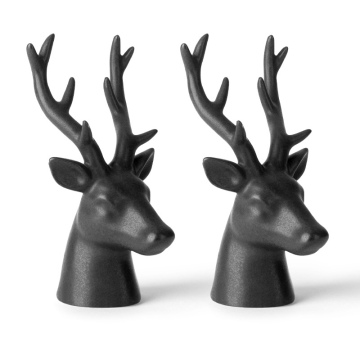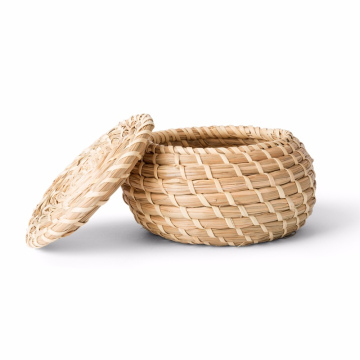A Culinary Adventure: Exploring the Flavors of Kung Pao Chicken
The Origins of Kung Pao Chicken
Kung Pao Chicken, a dish renowned for its bold flavors and distinctive combination of ingredients, finds its roots in the Sichuan province of China. The origins of this culinary masterpiece can be traced back to the late Qing Dynasty, specifically to the reign of Emperor Guangxu. Originally known as "Gong Bao Ji Ding," the dish was named in honor of Ding Baozhen, a governor of Sichuan, who was titled "Gong Bao." His affinity for this flavorful dish not only popularized it but also solidified its place in Chinese gastronomy.
The cultural significance of Kung Pao Chicken extends beyond its name, as it symbolizes the rich culinary traditions of the Sichuan region, which is famous for its use of spices and bold flavors. The dish traditionally comprises chicken, peanuts, and a hearty mix of vegetables like bell peppers, all tossed together in a savory sauce made primarily from soy sauce, vinegar, and sugar. This exquisite combination results in a balance of flavors that is both spicy and sweet, characteristic of Sichuan cuisine.
Throughout the years, Kung Pao Chicken has undergone various adaptations that are reflective of cultural exchanges and regional preferences. The traditional Sichuan version typically emphasizes the heat from Sichuan peppercorns, enhancing the dish's overall flavor profile. However, as Kung Pao Chicken gained popularity outside of China, particularly in Western countries, modifications became common. Variants often involve the substitution of ingredients, adjusting the spice levels to cater to local tastes. Nevertheless, regardless of these adaptations, the essential essence of Kung Pao Chicken—a rich and flavorful stir-fried dish—remains a beloved favorite worldwide.
Preparing for the Trip: Where to Find Authentic Kung Pao Chicken
Embarking on a culinary adventure to savor authentic Kung Pao Chicken can be both an exciting and enriching experience. The first step in this journey is identifying restaurants that are renowned for their genuine Sichuan cuisine. Major cities such as San Francisco, New York, and Los Angeles have a plethora of dining options that promise an authentic taste. In San Francisco, establishments like Spicy King and Z & Y Restaurant have garnered acclaim for their authentic offerings, often hailed by locals and visitors alike. Similarly, New York's Han Dynasty and Los Angeles' Chengdu Taste are celebrated for presenting an accurate representation of this iconic dish.
When searching for authentic Kung Pao Chicken, there are several indicators to consider. Look for restaurants that feature a well-curated Sichuan menu, as this is a strong signal of their expertise in the cuisine. The presence of traditional ingredients, such as Sichuan peppercorns, dried red chilies, and roasted peanuts, also helps determine authenticity. Additionally, observe the demographic of the clientele; eateries frequented by natives or individuals familiar with Sichuan cuisine are likely to serve dishes that honor tradition.
Navigating unfamiliar menus can be daunting, but understanding typical Sichuanese flavors can ease the process. Familiarize yourself with common dishes and their descriptions, as well as seeking recommendations from staff members, who are usually eager to assist in your culinary exploration. Furthermore, consider attending culinary festivals or events that focus on Sichuan cuisine, as these gatherings often feature a range of dishes, including Kung Pao Chicken. Such events provide a unique opportunity to sample this beloved dish in various interpretations while engaging with fellow food enthusiasts.
The Ultimate Kung Pao Chicken Experience
The experience of savoring Kung Pao Chicken extends beyond mere consumption; it is a multi-sensory journey that begins the moment the dish arrives at your table. Imagine sitting in a bustling restaurant, the air thick with enticing aromas. As the waitstaff sets down the vibrant bowl of Kung Pao Chicken, the enticing scent of spicy, roasted peppers and fragrant garlic envelops you, instantly awakening your appetite. The dish is presented beautifully, with bright, colorful vegetables and crunchy peanuts contrasting against the glossy, rich sauce that glimmers under the soft lighting of the dining area.
With eager anticipation, you take your first bite. The experience is an explosion of flavors that dance across your palate—initially, a gentle heat from the Sichuan peppercorns begins to tingle your senses, harmonizing with the slight sweetness of the sauce. The balance of spicy and sweet emerges as the tender chicken mingles with crisp vegetables and the distinct crunch of peanuts. The umami undertones amplify the overall flavor profile, making each mouthful a delightful experience. This combination of textures and flavors is what sets Kung Pao Chicken apart, creating a dish that invites you to savor every morsel.
The cooking method also plays a crucial role in this culinary adventure. The stir-frying technique ensures that each ingredient retains its freshness and unique character, while the blend of seasonings highlights the dish's depth. Personal anecdotes of dining with friends or family add to the joy of sharing this special meal, where laughter and conversation flow as freely as the sauce that binds the components. Whether enjoyed in a fine dining restaurant or a cozy eatery, Kung Pao Chicken provides a memorable experience that captivates the senses and beckons you to indulge in its robust flavors.
Recreating Kung Pao Chicken at Home
Recreating the iconic dish of Kung Pao Chicken in the comfort of your own kitchen is an enjoyable culinary endeavor that celebrates its rich flavors. To begin, gather the key ingredients which include boneless, skinless chicken thighs or breasts, Shiitake mushrooms, red bell peppers, unsalted peanuts, green onions, and dried red chilies. For the sauce, mix soy sauce, rice vinegar, hoisin sauce, and a hint of sesame oil to achieve the desired balance of sweetness and umami flavor.
Essential utensils for preparing Kung Pao Chicken include a sharp knife for chopping, a large skillet or wok for stir-frying, and a mixing bowl for combining the sauce. Additionally, a wooden spatula may prove handy for perfecting the stir-fry technique. Setting your workspace up efficiently will aid in speeding up the cooking process.
Now, let’s delve into the step-by-step instructions. Begin by marinating the chicken in soy sauce, cornstarch, and a splash of sesame oil for about 20 minutes, allowing the flavors to infuse thoroughly. In your skillet, heat a couple of tablespoons of oil over medium-high heat. Once ready, add the marinated chicken and stir-fry until golden and cooked through. Remove the chicken and set it aside to focus on cooking the vegetables. In the same skillet, sauté the Shiitake mushrooms and red bell peppers until they are tender.
Next, return the chicken to the skillet along with the dried red chilies, peanuts, and the pre-mixed sauce. Stir everything together, allowing the sauce to coat the chicken and vegetables evenly. Cook for an additional two minutes to thicken the sauce before garnishing with chopped green onions.
For those with dietary preferences, this dish can easily be modified. Substitute chicken with tofu for a vegetarian version, or utilize tamari sauce to achieve a gluten-free alternative. Pair your Kung Pao Chicken with steamed jasmine rice or a side of sautéed bok choy to enhance the meal's flavor dynamics. Enjoy your culinary experience!





